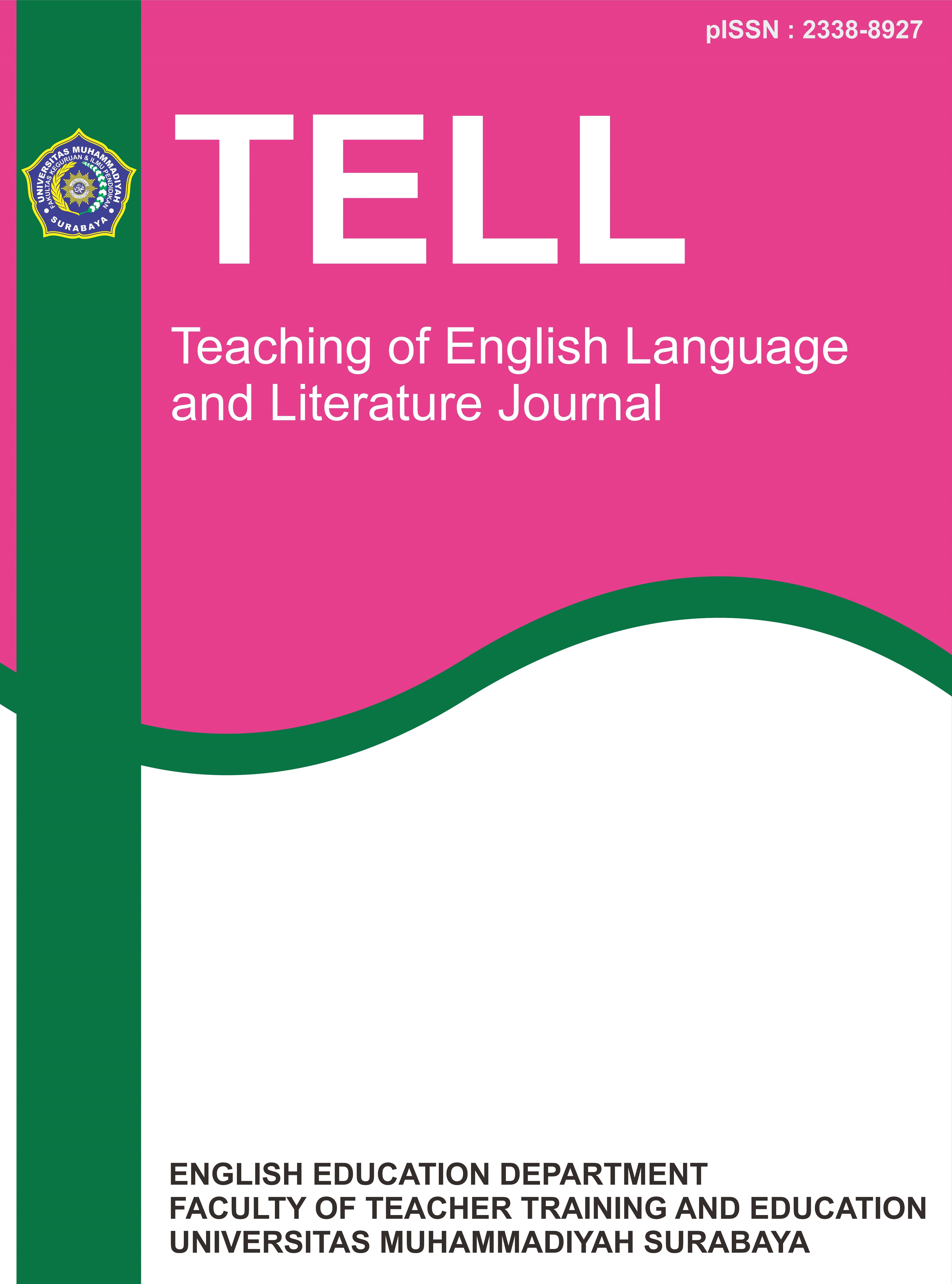The Use of Two Stay Two Stray Strategy to Improve Students Writing Ability in Report Text
Abstract
Two stay two stray strategy is a fun learning activity because the strategy makes students motivated in learning to write report text. This research uses classroom action research to solve some problems at class IX SMP Al-muhajirin somengko in learning to write English. The problems are less interested in writing English, lack of ideas, grammar, and lack vocabulary. Based on the problems the writer tried to conduct classroom action research by applying two stay two stray strategy. The purpose of this research are: (1) To describe the implementation of two stay two stray strategy in teaching writing for nine grade students of SMP Al-Muhajirin Sumengko. (2) To describe the improvement of writing ability of nine grade students of SMP Al-Muhajirin Sumengko after implementing two stay two stray strategy. (3) To describe the student's response to the implementation of two stay two stray strategy. This study was conducted in 1 cycle of two meetings through four stages: planning, action, observation, and reflection. Data collected through observation checklist, field notes, and questionnaires. The result from data analysis found that students' ability improved after post-activity assignment. The evident is from the results of tests showing the pre-activity assignment data is 13.6 with the category of students adequate to fair, after post activity assignment is 15.7 with category student ability good to adequate. It can be concluded that two stay two stray strategy is successfully implemented to improve the ability to write students.
Full text article
References
Bailey, S. (2004). Academic Writing. Taylor and Francis:
Routledge Falmer.
Broughton, G. (1980). Teaching English as a Foreign
Language. New York: Routledge.
Brown, D. (2007). Principles of Language Learning and
Teaching. USA.
Crawford, A. (2005). Teaching and Learning Strategies for
the Thinking Classroom. New York: The International Debate Education Association.
Cremin, T. (2009). Teaching English Creatively. USA and
Canada: Routledge.
E.Wilson, A. C. (1993). Acts of Teaching :How to teach
writing. USA: Library of Congress Catalonging.
Fathoni, N. (2014). The Influence using two stay Two
stray in Learning Reading Comprehension of Recount
text.
Febrianti, D. (2013). Using Two Stay Two Stray Technique
to finds Ideas For Writing A Hortatory Exposition
text. Jornal Of English Language Teaching , vol
/no 02.
Hadfield, J. H. (2008). Oxford basics:Introduction to
Teaching English. New York: Wordwide in Oxford New
York.
Harmer, J. (2004). How to Teach Writing. Stenton
Associates.
Hogue, A. O. (2007). Introduction to Academic Writing.
USA: Longman.
J.Alonso, D. (2011). English as a Second Language. New
York: Nova Science.
Jolliffe, W. (2007). Cooperative Learning in the
Classroom. London: Paul Chapman.
Kagan, S. K. (2009). Kagan Cooperative Learning. San
Clamente: Kagan Publishing.
Lie, A. (2002). Mempraktikkan Cooperative Learning di
Ruang-ruang Kelas. Jakarta: PT Grasindo.
Sari, E. P. (2015). The Use of Two Stay Two Stray in
Teaching Speaking Descriptive Genre.
Slavin, R. (1985). Learning to Cooperate,Cooperating to
Learn. New York: Plenum press.
Sudjiono, A. (2014). Pengantar Statistik Pendidikan.
Jakarta: PT Raja Grafindo Persada.
Watkins, P. K. (2005). Genre,Text,Grammar;Technologies
for Teaching and Assesing Writing. Sydney:
University of New South Wales
Authors
Copyright (c) 2019 Tell : Teaching of English Language and Literature Journal

This work is licensed under a Creative Commons Attribution-NonCommercial 4.0 International License.
Authors keep the copyright to their work. However, by publishing in this journal, they grant the journal the right to publish it first.
The published article is licensed under a Creative Commons Attribution-NonCommercial 4.0 License .
This means others can use, share, and adapt the work for non-commercial purposes, as long as they credit the author and the journal.
Authors can share the published article elsewhere (for example, in a university repository or in a book), as long as they clearly state that the article was first published in this journal.
Authors are encouraged to share early versions of their work (such as preprints) on their personal websites or institutional repositories, even before or during the submission process, as it can lead to productive exchanges, as well as earlier and greater citation of published work.

